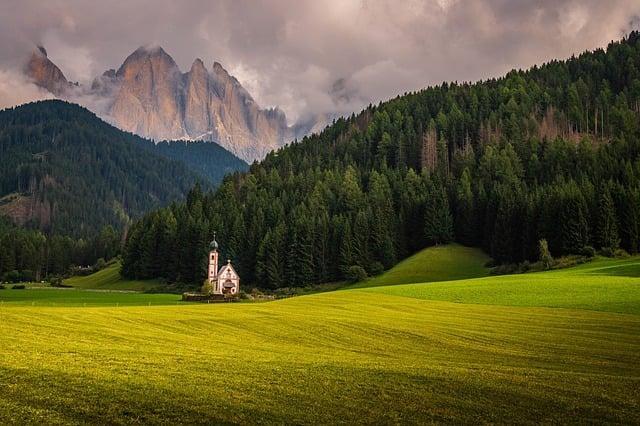As the days grew shorter and the air turned crisp, a small village prepared for a season of hope. Each year, the townsfolk gathered to light candles on a wreath, marking the four weeks of Advent. Children eagerly counted down the days, their excitement building like the flickering flames. They shared stories of a star that guided wise men and a humble stable that welcomed a miracle. With each passing week, the village embraced the spirit of anticipation, reminding all that Advent was not just a countdown, but a journey toward joy and renewal.
Table of Contents
- Understanding the Significance of Advent in the Catholic Tradition
- Exploring the Liturgical Practices and Symbols of Advent
- Preparing Spiritually: Reflections and Activities for a Meaningful Advent
- Embracing Community: Ways to Celebrate Advent Together
- Q&A

Understanding the Significance of Advent in the Catholic Tradition
Advent is a profound season in the Catholic calendar, marking a time of preparation and anticipation for the celebration of the birth of Jesus Christ. This period, which lasts for four weeks, invites the faithful to engage in a spiritual journey that emphasizes reflection, hope, and renewal. As the world outside grows darker with the onset of winter, the liturgical colors of purple and rose symbolize a time of penance and joy, respectively, reminding believers of the dual nature of this season. The significance of Advent lies not only in its historical roots but also in its call to deepen one’s faith through various practices.
During Advent, Catholics are encouraged to embrace a variety of traditions that enhance their spiritual experience. These may include:
- Advent Wreath: A circular arrangement of evergreen branches with four candles, each representing a week of Advent, illuminating the path to Christmas.
- Daily Reflections: Engaging with scripture and prayer to foster a deeper understanding of the coming of Christ.
- Acts of Charity: Focusing on giving and service to others, embodying the spirit of love and generosity that Christmas represents.
Through these practices, Advent becomes a transformative time, encouraging believers to prepare their hearts and minds for the joyous celebration of Christ’s birth, while also reflecting on the hope and promise of His second coming.

Exploring the Liturgical Practices and Symbols of Advent
As the Church prepares for the joyous celebration of Christmas, the season of Advent emerges as a time of reflection and anticipation. This sacred period, lasting four weeks, invites the faithful to engage in a deeper spiritual journey. Central to this experience are the liturgical practices that shape the rhythm of Advent. Each Sunday, a candle is lit on the Advent wreath, symbolizing hope, peace, joy, and love. The gradual illumination of these candles serves as a visual reminder of the growing light of Christ in the world, culminating in the bright celebration of His birth. The colors of the liturgical vestments also play a significant role, with purple representing penance and preparation, while the rose-colored candle on the third Sunday signifies a moment of joy amidst the waiting.
In addition to the Advent wreath, various symbols enrich the season’s meaning. The use of **nativity scenes** invites contemplation on the humble beginnings of Jesus, while **Advent calendars** offer a daily opportunity for reflection and anticipation. Many parishes incorporate **special prayers and readings** during Mass, focusing on themes of hope and redemption. The practice of **fasting and almsgiving** also encourages a spirit of generosity and self-examination, aligning the hearts of the faithful with the essence of the season. Through these rich traditions and symbols, Advent becomes a transformative journey, preparing believers not only for the celebration of Christmas but also for a deeper encounter with the divine.

Preparing Spiritually: Reflections and Activities for a Meaningful Advent
As the season of Advent approaches, it invites us to embark on a journey of spiritual preparation and reflection. This sacred time, spanning four weeks leading up to Christmas, serves as a reminder of the anticipation and hope that characterized the early days of Christianity. It is a period to cultivate a deeper connection with our faith, allowing us to pause amidst the hustle and bustle of daily life. Engaging in meaningful activities can enhance this experience, helping us to focus on the true essence of the season. Consider incorporating the following practices into your Advent routine:
- Daily Prayer: Set aside time each day for quiet reflection and prayer, inviting God into your heart as you prepare for the celebration of Christ’s birth.
- Advent Wreath: Create or light an Advent wreath, using candles to symbolize hope, peace, joy, and love, marking each week with a special intention.
- Acts of Kindness: Perform small acts of kindness or charity, embodying the spirit of giving that is central to the Christmas message.
- Scripture Reading: Dedicate time to read and meditate on the Scriptures, focusing on the prophecies and stories that lead to the Nativity.
In addition to these activities, consider journaling your thoughts and reflections throughout Advent. This practice can help you track your spiritual growth and deepen your understanding of the season’s significance. As you write, contemplate the themes of waiting and preparation, allowing your heart to be open to the transformative power of this time. By engaging in these reflections and activities, you can create a meaningful Advent experience that enriches your faith and prepares you for the joyous celebration of Christmas.

Embracing Community: Ways to Celebrate Advent Together
Advent is a beautiful season that invites us to come together as a community, fostering connections and deepening our faith. One of the most meaningful ways to celebrate this time is through **shared prayer**. Organizing weekly prayer gatherings can create a sacred space for reflection and anticipation. Consider incorporating **Advent wreaths** into your gatherings, where each candle represents hope, peace, joy, and love. This simple yet profound ritual can help everyone focus on the true essence of the season while encouraging heartfelt discussions about its significance.
Another wonderful way to embrace community during Advent is through **service projects**. Engaging in acts of kindness not only strengthens bonds among participants but also embodies the spirit of giving that Advent represents. You might organize a **food drive**, volunteer at a local shelter, or create care packages for those in need. Additionally, hosting **Advent-themed events**, such as potluck dinners or craft nights, can bring people together in a festive atmosphere. These gatherings can include activities like making ornaments or writing Christmas cards for the elderly, allowing everyone to contribute to the joy of the season while building lasting memories.
Q&A
-
What is Advent?
Advent is a season in the Catholic calendar that marks the beginning of the liturgical year. It lasts for four weeks, leading up to Christmas, and is a time of preparation and anticipation for the celebration of the birth of Jesus Christ.
-
When does Advent start and end?
Advent begins on the fourth Sunday before Christmas and concludes on Christmas Eve. The exact dates vary each year, but it typically falls between November 27 and December 3.
-
What are the themes of Advent?
The themes of Advent include hope, peace, joy, and love. Each week focuses on a different aspect, encouraging the faithful to reflect on their spiritual journey and prepare their hearts for the coming of Christ.
-
How is Advent celebrated?
Advent is celebrated through various traditions, such as lighting candles on an Advent wreath, daily prayers, and scripture readings. Many families also use Advent calendars to count down the days until Christmas, often incorporating acts of kindness or reflection.
As the season of Advent unfolds, it invites us to pause and reflect, preparing our hearts for the joy of Christmas. Embrace this sacred time of anticipation, allowing its rich traditions to deepen your faith and illuminate the path to the divine.

大家好,我是彼得潘,專業的手法身體治療師。我喜歡探索和研究各種主題,並透過與人工智慧的合作分享專業、實用、有趣的文章。我們定期進行人工審核,以確保內容的準確性。如果您發現文章中有任何不準確的地方,請隨時與我們聯繫,我們會及時糾正。您可以透過 [email protected] 與我們聯繫。



